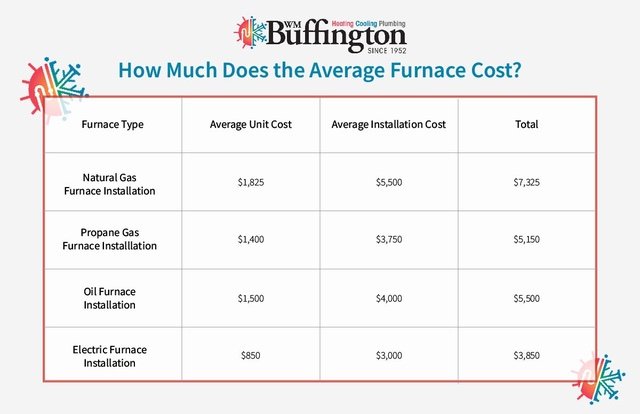Cost to Replace Furnace and AC What to Expect


Cost to Replace Furnace and AC: What to Expect
Assessing Your Heating and Cooling Needs
When considering the cost to replace your furnace and AC, it’s essential to assess your heating and cooling needs thoroughly. Factors such as the size of your home, climate conditions, energy efficiency requirements, and existing HVAC system play a significant role in determining the scope and cost of the replacement project.
Understanding the Replacement Process
Replacing both your furnace and AC involves a comprehensive process that typically begins with a thorough inspection and assessment by HVAC professionals. They will evaluate the condition of your existing systems, identify any deficiencies or inefficiencies, and recommend suitable replacement options tailored to your needs and budget.
Factors Influencing Cost
Several factors influence the cost to replace your furnace and AC, including the type and size of units selected, installation labor fees, additional materials or components required, and any necessary modifications to your home’s ductwork or electrical system. Additionally, geographic location, local labor rates, and market demand can impact overall project costs.
Types of Furnaces and AC Units
The cost of replacing your furnace and AC depends heavily on the type and efficiency of units chosen. For furnaces, options range from traditional gas or electric models to high-efficiency condensing furnaces equipped with advanced features like variable-speed blowers and modulating gas valves. Similarly, AC units vary in efficiency levels, from standard single-stage systems to energy-efficient variable-speed compressors and SEER-rated models.
Energy Efficiency Considerations
While high-efficiency furnaces and AC units may have a higher upfront cost, they offer long-term benefits in terms of energy savings and reduced utility bills. Energy-efficient models typically have higher initial purchase prices but lower operating costs over their lifespan, making them a wise investment for homeowners seeking to minimize energy expenses and environmental impact.
Cost vs. Value
When evaluating the cost to replace your furnace and AC, it’s essential to consider the value and benefits they provide. While upfront costs may seem significant, a properly sized and installed HVAC system can enhance comfort, indoor air quality, and home resale value. Additionally, energy-efficient upgrades can yield substantial long-term savings and may qualify for rebates or incentives from utility companies or government programs.
Budgeting and Financing Options
To manage the cost of replacing your furnace and AC, budgeting and financing options are available to homeowners. Many HVAC contractors offer financing plans or flexible payment options to spread out the cost over time. Additionally, exploring available rebates, tax credits, or financing programs for energy-efficient upgrades can help offset initial expenses and make the investment more affordable.
Choosing a Qualified Contractor
Selecting a reputable and experienced HVAC contractor is crucial when replacing your furnace and AC. Look for contractors licensed and insured in your area, with a proven track record of quality workmanship and customer satisfaction. Request multiple quotes from different contractors to compare pricing, services offered, and warranty coverage before making a decision.
Planning for Long-Term Maintenance
Once your new furnace and AC are installed, planning for long-term maintenance is essential to protect your investment and ensure optimal performance. Schedule regular maintenance appointments with HVAC professionals to inspect, clean, and tune up your systems annually. Proper maintenance can extend the lifespan of your HVAC equipment, minimize repair costs, and maintain energy efficiency over time.
Conclusion
Replacing your furnace and AC is a significant investment that requires careful consideration of various factors, including your heating and cooling needs, budget, and energy efficiency goals. By understanding the cost drivers, evaluating options, and working with qualified professionals, you can achieve a seamless replacement process and enjoy enhanced comfort and efficiency in your home for years to come.








